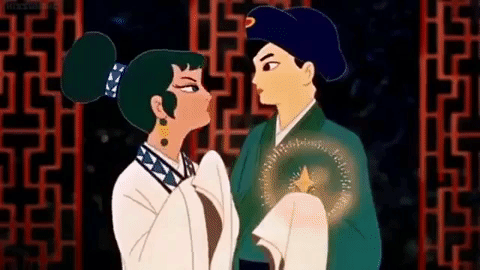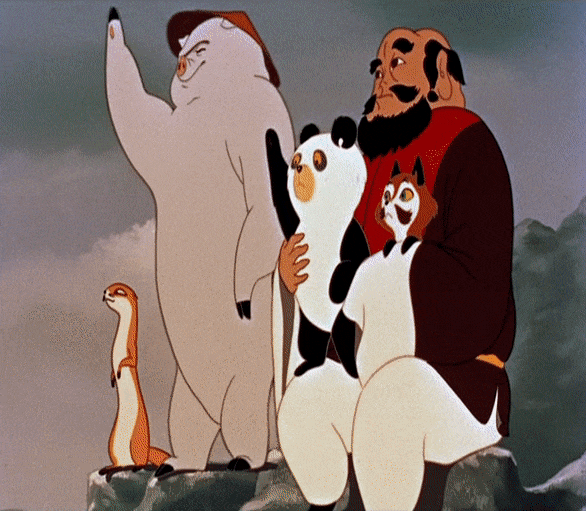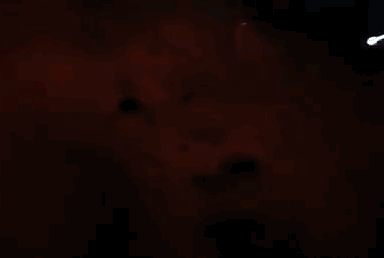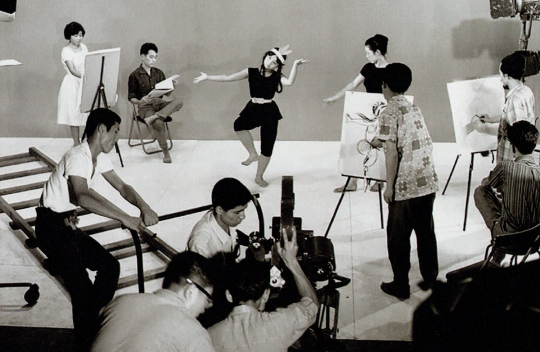originally posted at https://canmom.tumblr.com/post/711956...
Hi there. It’s Thursday. You know what that means (yes, it means i’m freeeeee)
Today we will be rolling back to some of the earliest days of anime!
The story of Toei goes back to 1946. In the immediate aftermath of WWII, there were very few games in town when it came to Japanese animation (or, to be fair, animation in most places). During the war, animators had been recruited to make propaganda films such as Momotaro: Sacred Sailors, among them Akira Daikuhara.
In the immediate aftermath, Kenzō Masoaka (of Benkei tai Ushiwaka, for anyone who remembers AN24) began the first effort to make an animated film post-war. This film was titled Sakura: Haru no genso (Cherry Blossom: Spring’s Fantasy); it was followed by a series of three films about a cat called Tora-Chan. But Masoaka’s studio struggled, constantly closing and re-opening. At the time it was operating under the name 日本動画映画 Nihon Dōga Eiga or Japan Animated Films, or just the abbreviation 日動映画 Nichidō Eiga. In 1956, they were bought by live action studio Toei (itself approaching 20 years old, founded in 1938) and renamed to Toei Dōga, where they started making increasingly elaborate animated films.

Toei of this era was sometimes called the rather patronising name ‘Disney of the East’. There is some truth to it, in that their ambition, especially in the early years, was certainly to make animated films as elaborate as those of old Walt. Their first feature was 白蛇伝 Hakujaden (1958), based on a Song Dynasty Chinese legend about a lost pet snake who transforms into a woman in the hopes of reuniting with her former owner, a monk who thinks that’s sus, and two pandas who try to sort it all out; in English it’s variously translated as The White Snake Enchantress, Legend of the White Serpent or even Panda and the Magic Serpent.
Part of the goal of the film, to Toei Dōga president Hiroshi Ōkawa, was a gesture of reconciliation towards China after the whole ‘invading and occupying’ thing.
The film was Rintarō’s first animation job; it also left a massive impression on a young Hayao Miyazaki, who wrote the following in Gekkan ehon bessatsu: Animēshon (1979), trans. Beth Cary and Frederik L Schodt in Starting Point:
What I’m saying here is that when young people feel attracted to the heroes of a tragedy [context: such as The Diary of Anne Frank], whether in animation or other media, a type of narcissism is really involved; this attraction they feel is a surrogate emotion for something they have lost.
From personal experience, I can say that I first fell in love with animation when I saw Hakujaden, the animated feature produced by Toei Animation in 1958. I can still remember the pangs of emotion I felt at the sight of the incredibly beautiful, young female character Bai-Niang, and how I went to see the film over and over as a result. It was like being in love, and Bai-Niang became a surrogate girlfriend for me at a time when I had none.
It is in this sense that I think we can achieve a type of satisfaction, by substituting something for the unfulfilled portion of our lives.
The feelings evoked by Bai-Niang may go some way to explaining the role of similar girls in Miyazaki’s movies…

Hakujaden has some curious properties as a work of animation. It was, especially for the time, astonishingly elaborate and straining the technical capabilities of the industry (although the claim on Wikipedia that it had 13,590 staff seems rather dubious lmao). The drawing count is stratospheric thanks most scenes being animated on ones and twos - the opposite of the limited animation techniques that anime would later perfect. Despite that, it is also the work of an inexperienced team, and compared to later works its animation can feel awkwardly timed, the flood of inbetweens turning everything to mush.
Nevertheless, there are two stars of the show in terms of animation. One is Yasuji Mori, who would later be one of Toei’s star animators, creating scenes such as the dance at the beginning of this post - as well as teaching Miyazaki after he joined Toei. The other is Akira Daikuhara, who was way ahead of the game on effects animation, creating the film’s transformation sequences. Daikuhara would go on to be one of Toei’s main animators of human characters, while Mori tended to take the animal/mascots; he has been a relatively forgotten figure, although that’s starting to change with articles like these ones by Matteo Watzky, whose research just digs deeper and deeper.

Toei’s early films tend to follow the precedent set in Hakujaden, adapting folktales from (mostly) China and Japan. In 1959 they covered a Japanese story in Shōnen Sarutobi Sasuke; 1960, they took on Saiyūki (Journey to the West); then Anju to Zushiōmaru (The Orphan Brother, 1961) and Arabian Nights: The Adventures of Sinbad (1962).
In this period of Toei, there was a lot of ambition, and also a feeling of inadequacy compared to the elaborate animated films being made in other countries. Hayao Miyazaki, who joined Toei in the 1963, wrote in 1982:
I used to create feature-length works for Toei Animation, but compared to the works just mentioned, they were obviously far inferior, at least technically. Sort of like showing rabbits slipping and falling, that sort of thing. We wondered if we would ever catch up to the level of what was being done in America, France or Russia, or if it were even possible to do so. Frankly, we really didn’t know.
To begin with, we didn’t even know what we had to do to reach the same level of excellent as the best works out there. We knew we had constraints, such as short production schedules, small budgets and so forth, but above and beyond that, we began to develop an inferiority complex: we wondered if we even had the basic talent needed to proceed. In retrospect, the only thing that probably kept us going, and drove us to pursue such a long-term goal, was our determination.
Miyazaki’s words should be taken with a grain of salt, since they definitely suit his personal myth-making. Still, conditions at Toei in the 60s were rough, leading to the first major unionisation struggle of anime history, which I wrote about in AN70. The studio started bringing on part-timers paid hourly rather than a salary, and created severe pay discrepancies, which were met with strikes and departures from the studio. Saiyūki took such a tole on its director Taiji Yabushita that he was hospitalised; Yasuji Mori would later create the term ‘anime syndrome’ for this sort of overwork because it was not the last time by any means.
However, I’m going to zoom over all of these to get to the わんぱく王子の大蛇退治 Wanpaku Ōji no Orochi Taiji (The Naughty Prince’s Orōchi Slaying, more commonly translated The Little Prince and the Eight-Headed Dragon) in 1963 - not because it’s necessarily more important, although it’s remembered as one Toei’s best films, but because I happen to have a fantastic analysis of one of its key scenes on hand thanks to AniObsesive and Toadette.
Wanpaku Ōji breaks from precedent in many ways, particularly its visual design, which takes on highly simplified shapes reminiscent of the then ultra-modern UPA style by way of haniwa figures. The story at least follows the pattern, adapting a Shinto myth in which the storm god Susanoo battles (guess what) an eight-headed dragon Yamat no Orochi. Susanoo is motivated by the death of his mother Izanami, and goes on a journey to try to find her, which leads him to the village of Princess Kushinada - a village with a dragon problem, which they’ve kept at bay only by sacrificing Kushinada’s seven sisters. Susanoo, horny for a princess who looks like his mum, decides it’s time to intervene.
The dance scene above comes in the middle of the movie, in which the goddess Ame-no-Uzume performs an increasingly mystical dance. It was an ambitious experiment of Makoto Nagasawa, who had joined as an inbetweener on Saiyūki, with large spacing and broad motion to create a snappy feeling. Animation Obsessive writes:
Typical motion at Toei, Nagasawa said, would be “neatly in-betweened from the first [key] pose to the last [key] pose.” In other words, in-betweens smoothed out the movement and made it longer, more complete and more realistic. By contrast, Nagasawa’s drawings of Uzume are often at wide intervals, with minimal in-betweens. Sometimes, she basically teleports from one frame to the next.
Even when the intervals aren’t that wide, the way Uzume moves remains big, broad, clear and non-real. Nagasawa pushes her gestures, increases her speed, shows us only what he wants to show us. The action is crisp, always holding its abstract shape. No naturalistic touches distract from the core form of what Uzume does.

Alongside Nagasawa, Yasuji Mori was now coming into a role close to that of the now-standard 作画監督 sakuga kantoku aka sakkan or animation director, an experienced artist whose job is to correct the drawings from many different key animators to keep them on-model. Modern anime productions tend to have a strictly hierarchical approach where the characters are designed by one or a few character designers, usually also the lead sakkan. At Toei, things had been a bit more fluid - the individual animators would often design the characters they were going to animate, with a division of labour closer to the old Disney style. On this film, it became more of a hybrid: Mori drew the final model sheets, but the animators would submit suggested designs to him.
For the most elaborate scenes, such as the dance, they went to great lengths to record a suitable score and record live-action footage with professional ballet dancers. I encourage you to read the AniObsessive article for the details.
At the time of Wanpaku Ōji, Toei was starting to face competition. The already-renowned mangaka Osamu Tezuka had founded MushiPro, which was rapidly taking over TV, and the sphere of TMS satellite studios were starting to get going and siphon away many of their best people such as Yasuo Ōtsuka. Still, the animators at Toei were determined to try and stand alongside international animators:
The team was well aware of the trends in world animation at that time. According to Nagasawa, they were watching work from Canada (Norman McLaren), Czechoslovakia (Jiří Trnka), Russia (The Snow Queen), France (The King and the Mockingbird) and so on. It was all bold, new animation. In The Little Prince, Toei took up the challenge this work presented, without simply copying it. The team contributed to modern animation while staying rooted in the ancient, and in Japan itself.
Subsequently, Japanese animation is sometimes divided into a ‘Toei tradition’ vs. a ‘MushiPro tradition’, of full vs limited animation respectively, followed by the various successors such as Ghibli on the one hand and Madhouse on the other. As ever this is not really very accurate, and both ‘lineages’ crossed over extensively (just look at Kanada).
Toei’s own output adapted to the times. Takahata’s Horus: Prince of the Sun (AN 70) might be the last of the ambitious movies in their old style; after this, the fairytale films were gradually replaced by gekiga animation such as Tiger Mask, super robots like Mazinger Z, and then at the end of the 70s increasingly science fiction adaptations of Leiji Matsumoto’s works (AN 146). In the 80s, shōnen exploded onto the scene and Toei made a lot of Dragon Ball and Saint Seiya, later joined by other franchises like PreCure, Digimon and One Piece. So Toei remains one of the largest and most robust animation studios in Japan. They’ve got a lot of salaried staff, a union(!), and regular work in the form of wildly popular franchises. But occasionally they’ll make something cool and weird within that remit, like Hosoda’s One Piece film (AN61), Kyōsōgiga (AN98) - or Interstella 5555 which we watched last week.
So! Tonight though we’re going to go back and look at those ambitious early days, where it started, with snakes and dragons and a bishōjo who’s 美 enough to inspire the entire career of Hayao Miyazaki. Animation Night 149 will begin at 20:00 UK time (UTC), (13:00 California time), at twitch.tv/canmom - hope to see you there!
And next week I have a serious treat for you, because the Inu-Oh BD finally dropped. Can’t think of something more perfect for #150 than returning to Masaaki Yuasa.
And now to spend the rest of the day until 8pm on intensive gamdev 😵💫
Comments